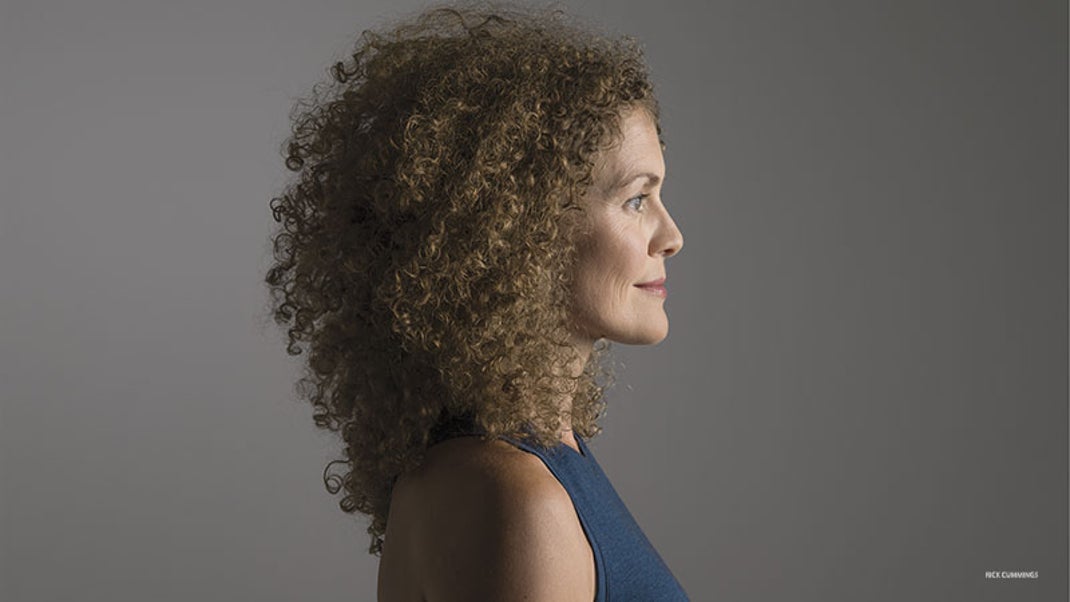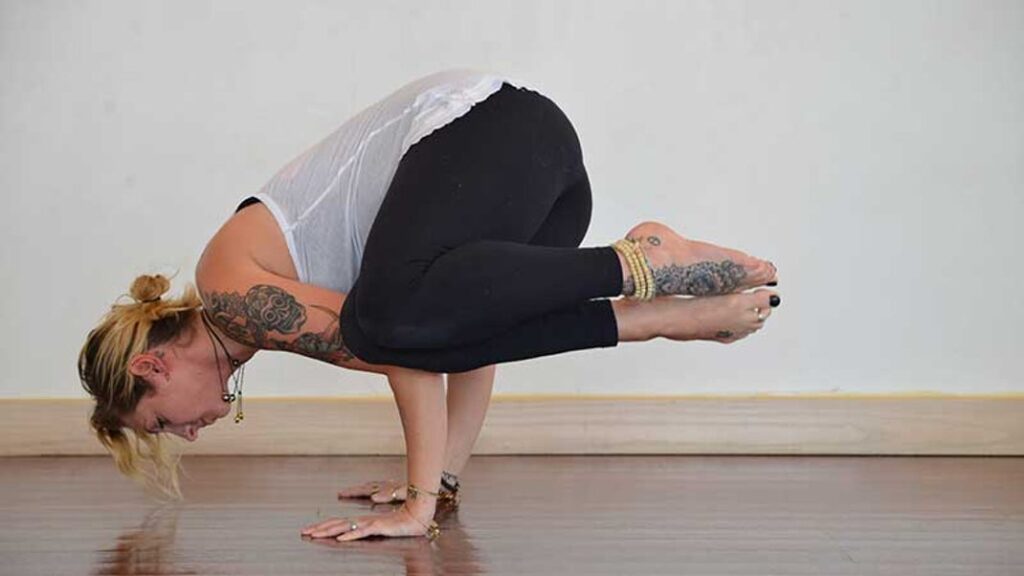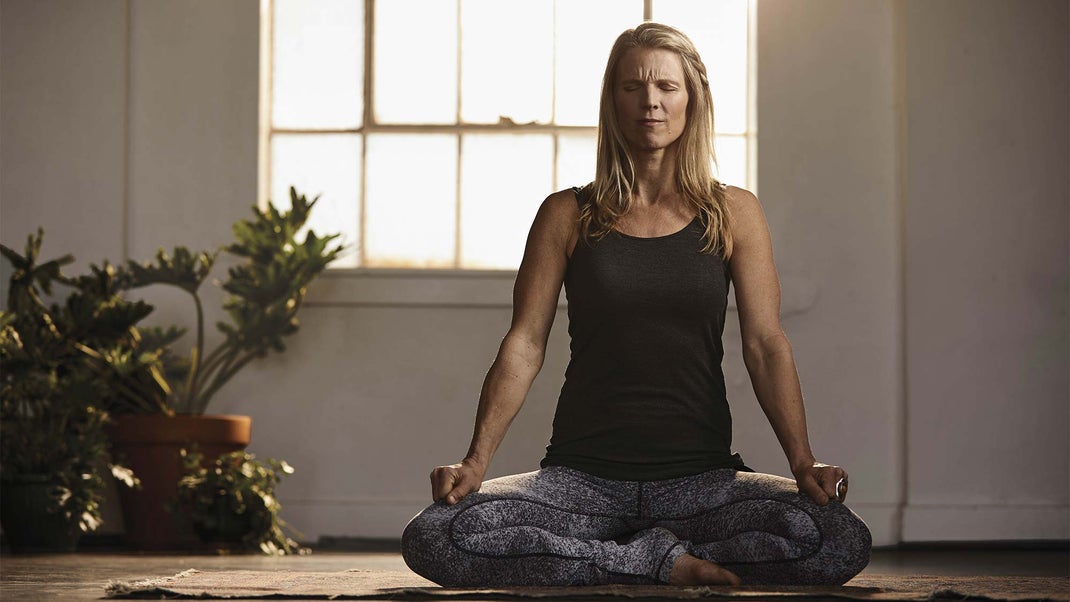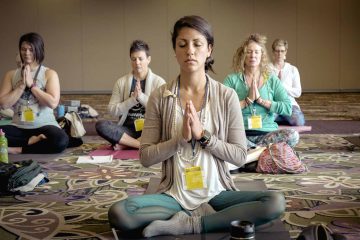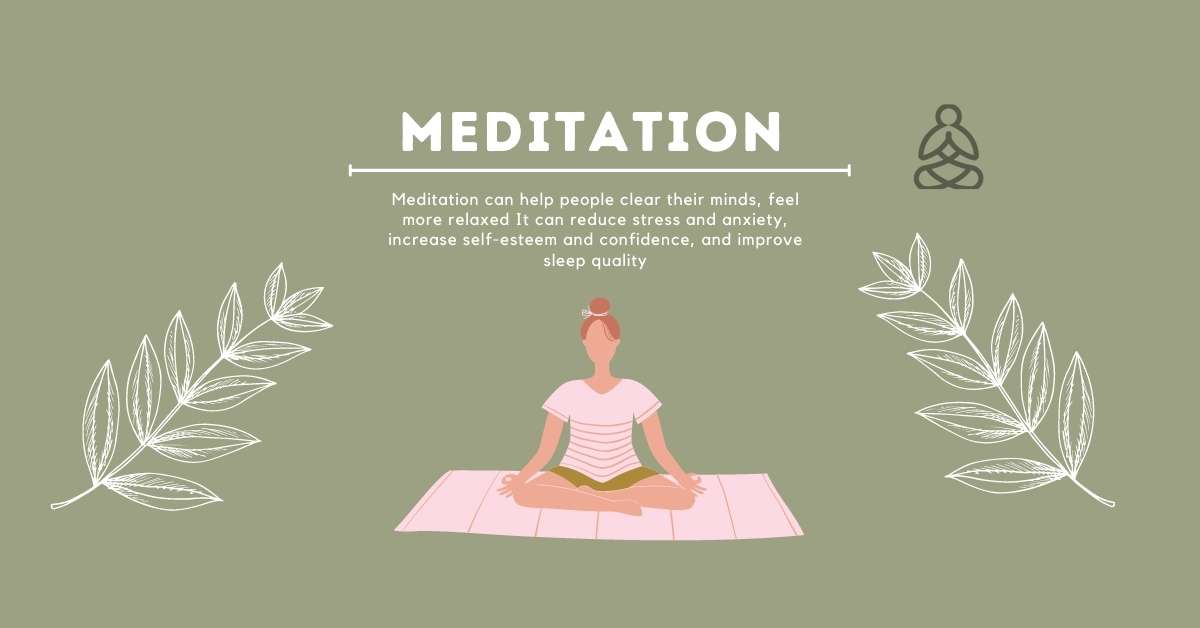Yoga is a practice that has been around for centuries, and it has helped millions of people to find peace in their lives. Yoga calms anxiety holistically by focusing on the body, mind, and spirit. Yoga is not just physical exercise; Yoga is an ancient art that can help you unlock your inner potential for happiness.
Yoga provides relief from stress and anxiety because it helps regulate breathing patterns and reduces negative thinking patterns which lead to less cortisol release in the brain (a hormone associated with stress).
Yoga also boosts self-confidence and self-worth while improving concentration levels. You will be able to see improvements in your mood within weeks of practicing yoga regularly!
For those suffering from anxiety, yoga can be a lifeline. Here’s why doctors are increasingly recommending it as a complementary therapy.
When her daughter, Eden, entered the 1oth grade, Avigail Posner, ordinarily a self-described “strong, rational” woman, began to unravel. “Eden is a high-functioning autistic child, and had previously been in some mainstream classes,” says the 52-year-old biochemist by training from Hollywood, Florida. “When they put her in a special program again, she grew extremely sad and upset about it, recognizing her disability and separation from the ‘normal’ kids.” Watching her child suffer pushed Posner to a scary, unfamiliar place. “I’d wake up in the middle of the night from terrible dreams, my heart pounding, and I started having anxiety attacks during the day. One evening, my husband and I were out at a nice restaurant with friends, and I started feeling panicky—my heart was racing and I was sweating—and I had to leave. I went to the beach and just cried and cried.”
Posner began taking medication to treat her depression and anxiety, but it wasn’t an ideal solution.“I didn’t like the way it made me feel because it sort of blunted my feelings,” she says. Desperate for help, she made an appointment with her primary-care doctor. “One of the first things he recommended was yoga,” she recalls. “He said it would help me relax, be more aware of my body and emotions, and handle what was happening.”
She started a vinyasa class three days a week, and within a month she was sleeping better and her panic attacks had decreased. “The breathing helped, and being present in the poses taught me to stay in the moment and observe what was happening,” Posner says. “It helped me find a sense of peace in a turbulent time, and that’s carried over into my daily life.”
Asanas and breathwork have been calming jittery minds and smoothing the jagged spikes of stress for thousands of years. Even so, Posner’s doctor’s recommendation to get on the yoga mat is surprising, as doctors and psychiatrists who treat anxiety (defined as persistent, excessive, and unrealistic worry about the future) are often slow to endorse the practice.
“Many in the medical community have had a bias toward medication because until recently that’s what was most well studied,” says Jennifer Griffin, MD, an integrative medicine physician at the Institute for Health & Healing Clinic at Sutter Pacific Medical Foundation in San Francisco. “But attitudes are changing. Some of my patients struggle with anxiety, but I rarely prescribe medications. I feel more comfortable prescribing holistic modalities like yoga.”
In 2011, Harvard researchers published an analysis of data from a nationally representative sample of people and found that 3 percent (the equivalent of nearly 6.4 million Americans) had been advised by their health care practitioners to use mind-body therapies like yoga and meditation—and more than a third of those “prescriptions” were doled out to those who’d had a diagnosis of anxiety.
Last year’s annual American Psychiatric Association meeting was sprinkled with seminars and sessions on yoga and meditation, and the Society for Integrative Oncology’s new guidelines endorse yoga and meditation as complementary treatments for anxiety in breast cancer patients.
“We’ve seen a significant uptick in referrals from psychologists, especially for patients with anxiety,” says Steve Hickman, PsyD, executive director of the University of California San Diego Center for Mindfulness, where a variety of health care practitioners, including psychologists, conduct mindfulness research and offer classes for patients.
“Therapists and doctors are rethinking their attitudes toward meditative approaches largely because there’s a persuasive body of evidence showing that [these modalities] can help with stress and mood disorders.”
Other forces driving the newfound acceptance of these ancient practices include the rise of integrative medicine and its cousin, integrative psychotherapy. Both merge the best of Eastern and Western treatments—say, talk therapy plus breathwork and progressive relaxation.
And perhaps most importantly, both address an enormous, unfulfilled need for safer treatment options: The United States is, according to the World Health Organization, an incredibly anxious nation. What’s more, nearly a third of Americans suffer from anxiety at some point, and one in 19 people ages 36 to 5o receive a prescription for benzodiazepines—potentially addictive sedatives commonly prescribed for anxiety that, especially in higher doses, can cause drowsiness, dizziness, confusion, memory loss, and nightmares.
“As our knowledge of the downsides of drugs increases, more and more people are becoming interested in non-drug alternatives to treat anxiety,” says Adam Splaver, MD, voluntary assistant clinical professor of medicine at Nova Southeastern University, and Posner’s doctor. “There’s evidence to show that yoga can work, and instead of just treating the symptoms like meds do, it actually helps you learn to cope with your worries. Given the choice, most of my patients would rather overcome their problems than put a Band-Aid on them.”
The Science Behind Yoga for Anxiety
The science is in hundreds of studies have looked at the benefits of meditation for calming the mind, but perhaps the most definitive paper to date was published last year in the journal JAMA Internal Medicine. In the wide-ranging literature review, researchers at Johns Hopkins University scrutinized 47 studies on meditation programs that involved at least four hours of training.
“We found consistent evidence that mindfulness meditation reduced the symptoms of anxiety to some degree across studies,” says Madhav Goyal, MD, lead author and assistant professor of medicine. “When you’re anxious, your mind can get carried away with worrying about things that might happen, and that actually makes you feel worse and can cause other symptoms, like insomnia. Meditation teaches people certain skills that can help counteract that tendency, like staying in the moment, recognizing worried thoughts when they’re happening, and preventing them from getting worse.”
In the research, about 20 to 30 minutes of daily mindfulness meditation—a secular type that specifically aims to cultivate awareness of present-moment thoughts, feelings, and experiences—showed the most promise. But there’s other evidence that many meditation types can be effective, including lovingkindness, which involves sending loving thoughts to yourself and others, and Transcendental Meditation, in which you repeat a mantra to allow your mind to drift into a non-thinking realm. Based on his team’s findings, Goyal, a practicing internist, now recommends meditation not only to his patients with anxiety but also to those who are depressed and in physical pain—the two other conditions for which their study found the practice to be effective. “It works and it’s safe, and that’s a good combination,” he says.
When it comes to the broader practice of yoga, many experts agree that a combination of asana, pranayama (breathing), and mindfulness (or some form of meditation) is likely to be most effective at quelling apprehension— and the science seems to bear this out. Meditative yoga programs have been found to alleviate anxiety in women with depression, in uninsured and low-income patients being treated for anxiety and depression, in women who are victims of violence, in veterans suffering from PTSD, and in women awaiting in vitro fertilization.
That last finding comes as no surprise to Carly Fauth, 37, of Milford, Massachusetts. Six years ago, the marketing professional was in the midst of infertility treatment and felt “overwhelmed and out of control—and the further along in the process we went, the more stressed I got,” she says.
“When I mentioned my anxiety to my fertility doctor, he told me a lot of his patients find yoga to be helpful.” She started taking a hot yoga class once a week—and loved it. “It was a time for me to get out of my head and focus on nothing but breathing and staying present in the moment,” she says. When Fauth became pregnant, yoga came in handy again: “I used breathing and yoga postures at home to stay calm and centered throughout my pregnancy.”
Researchers from The University of North Carolina at Chapel Hill School of Nursing confirmed in April this year that, for the 10 percent of pregnant women who suffer from anxiety, yoga can be an effective balm. “We looked at 13 studies, and regardless of the type of yoga they used in the trial, the pregnant participants had significant decreases in anxiety and depression,” says primary study author Karen M. Sheffield. “Women who did at least one class a week for seven weeks experienced a positive effect.”
Your Brain on Yoga
On a basic level, meditative practices can help calm an overactive brain. “Anxiety is essentially worrying about the future, about bad things that haven’t happened yet and probably won’t,” says Jenny Taitz, PsyD, a clinical psychologist at The American Institute for Cognitive Therapy in New York City.
“Because anxiety is future-focused, anything that keeps you at the moment is helpful.” And that’s exactly what yoga and meditation do. By paying attention to the way your body feels in Warrior II or holding your mind on the feeling of the breath moving in and out of your nostrils, you keep yourself firmly anchored in the present moment.
“People who’ve taken our meditation classes say things like, ‘Now when something difficult happens, I notice that I’m worried about the worst possible outcomes; once I notice that, I’m able to just watch those fearful thoughts without getting so caught up in them,’” Hickman says. “Mindfulness helps you create a healthy emotional distance from distressing thoughts.”
Those subjective changes in your attitude and emotions seem to reflect what’s happening on a physical level in the brain. Using an advanced MRI technique to peer into the brains of subjects who had normal levels of everyday anxiety, researchers at Wake Forest School of Medicine reported that during 20 minutes of mindfulness meditation, the ventromedial prefrontal cortex—the area of the brain that can tamp down feelings of worry—is activated.
When participants’ anxiety decreased (anxiety levels dropped by as much as 39 percent), activity increased in the anterior cingulate cortex, an area that governs thinking and emotion, indicating that rational thought was displacing worry.
“During mindfulness meditation, your brain is getting practice at controlling your reactions, so if you meditate often enough, you become better at controlling your reactions during your everyday life,” says Fadel Zeidan, Ph.D., the study’s lead author and director of neuroscience research.
Other research has revealed that yoga may affect brain levels of gamma-aminobutyric acid, or GABA, a calming neurotransmitter associated with neuronal receptors targeted by the antianxiety benzodiazepines. For instance, researchers at Boston University School of Medicine found that a 12-week yoga intervention was associated with increased GABA levels in the brain and greater improvements in mood and anxiety than a similar-length walking program.
And an earlier study from Boston University School of Medicine and McLean Hospital, a psychiatric hospital affiliated with Harvard Medical School, found that after an hour of yoga, GABA levels increased significantly.
While a single session of yoga or meditation can lower your anxiety in the moment, if you want to reduce your tendency to worry and fret for good, consider making these practices a habit, says Angela Fie, owner of Yoga-Med in Phoenix, a yoga and meditation program that treats anxious people, many of whom have been referred by doctors. “By practicing regularly, you lower your baseline level of emotional arousal so when something bad happens or you have a worrying thought, you meet it with presence, curiosity, and patience rather than fearful reactivity,” says Fie.
Posner can vouch for the benefits of committing to yoga long-term. She now practices five days a week and is studying to become a yoga teacher. “My daughter is in college, and, thanks largely to my yoga routine, I’m much calmer,” she says. “My practice has given me peace of mind. I’m a better wife and mother, and a better person, because I can handle the everyday ups and downs more easily. I feel better than ever.”
Conclusion:
Yoga and mindfulness can help to control your reactions and emotions, leading to a calmer you. Yoga can also increase GABA levels in the brain, resulting in an improved mood and less anxiety. With regular practice, yoga can change your baseline level of emotional arousal so that you meet life’s challenges with peace of mind. If you’re looking to reduce your anxiety long-term, consider making yoga a part of your routine!
